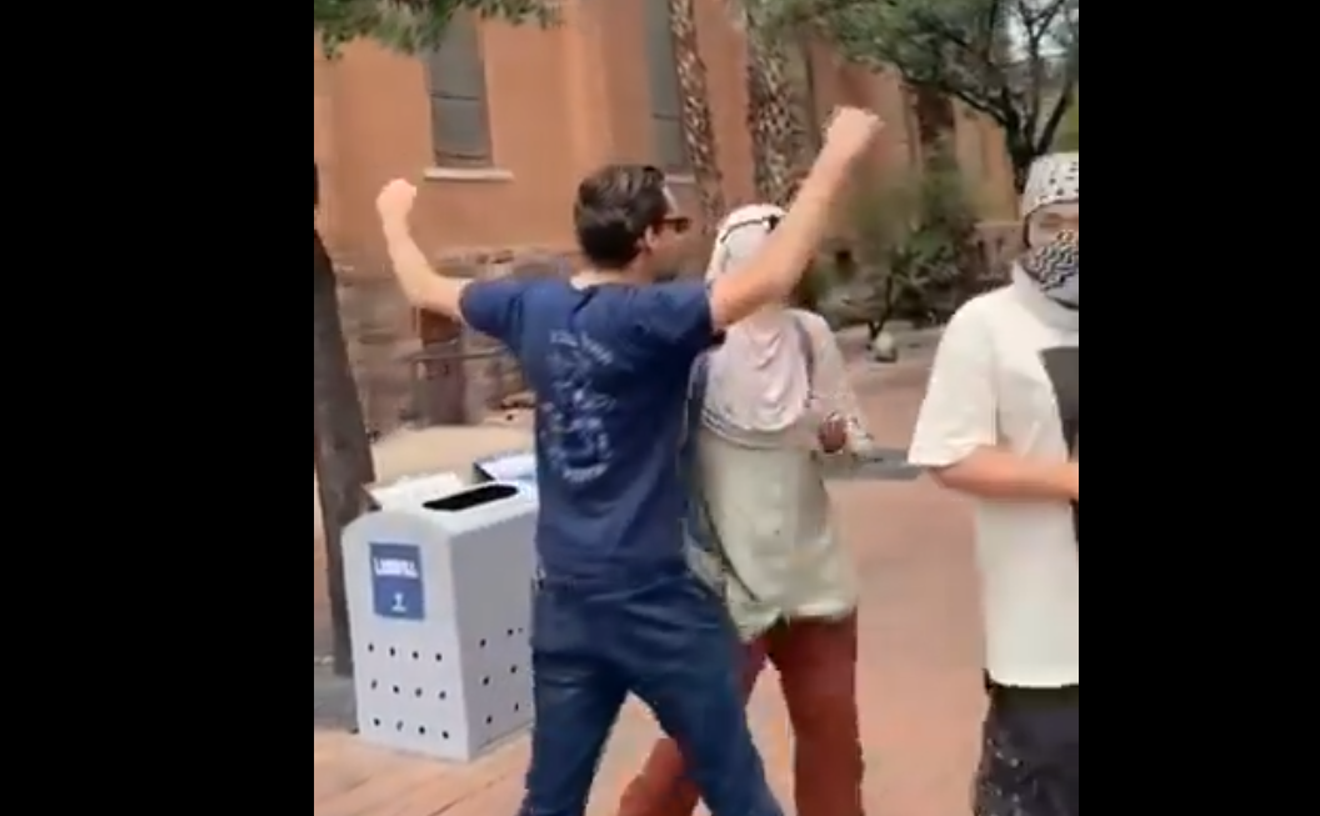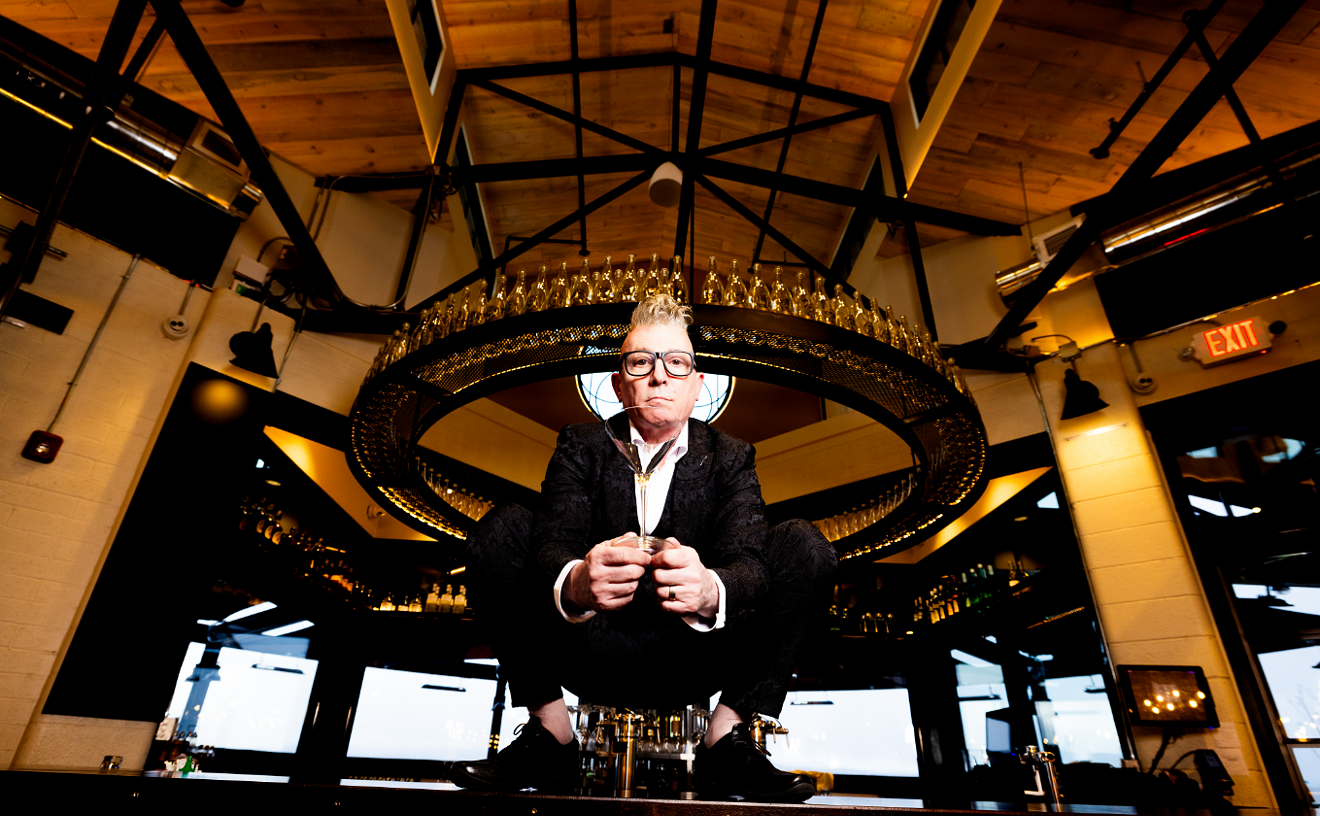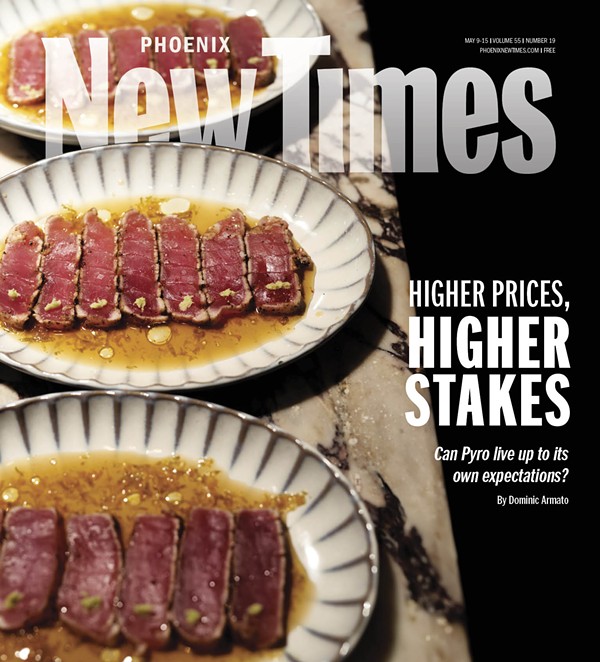The less-than-half-hour movie is called The Homeowner, made as a promotional film for West Valley developer -- and west-side Cardinals stadium booster -- John F. Long's "International Home Show." You won't find it on most lists of the comedian's works. Ephraim Katz doesn't mention it in his redoubtable Film Encyclopedia, nor does it appear on Keaton's list on IMDb, the Internet Movie Database. I was able to find the title online on a list of Keaton's credits from, of all places, Wherehouse Music, accompanied by a two-word description: "Not available."
It is, in other words, a lost movie. But it's been rediscovered by Valley film historian and archivist Richard M. Roberts, who screened it at the Cinecon convention in L.A. last August, and who will show it here in Phoenix, the city in which and for which it was made, as part of a program of silent comedy shorts on Sunday, February 18, at the Phoenix Center for Community Arts (for details see Sunday in Night & Day).
According to Roberts, Keaton, who died of cancer in 1966, made many such industrial and commercial shorts in the last decade or so of his life. "He did tons of this kind of stuff," says Roberts, an acquaintance of Keaton's wife, Eleanor. "This was his bread and butter for a few years in the '60s. The myth was that he was broke and out of work."
In fact, Keaton worked constantly and very lucratively during the '50s and '60s, appearing in numerous features ranging from Beach Party movies to It's a Mad, Mad, Mad, Mad World, on television in shows such as The Twilight Zone, and even in Film, a short subject scripted by Samuel Beckett.
He also toured in stage productions. Roberts believes that Keaton made The Homeowner while passing through the Valley in the national tour of Once Upon a Mattress. "He had an advance guy who would call ahead to businesses in towns where he would be appearing," says Roberts. "He'd say, 'Buster Keaton will be in town on these dates, and here are his rates.' He made a lot of beer commercials, stuff like that. There's hours of the stuff."
Maybe, but it's unlikely that much of it is as authentically Keaton-esque as The Homeowner. While no one would remotely class it with his silent masterpieces like The General or Sherlock, Jr., this color short clearly shows the master's touch. The direction is credited to one Joe Parker, but, as Roberts notes, "Just looking at the shots and the way they're set up, Buster had a huge hand in this."
He's right. While one of those oily Boomer-era narrators extols the virtues of living in that up-and-coming neighborhood Maryvale, we see Keaton, the stolid, unflappable, economy-minded Everyman, getting into various types of mischief as he's escorted around various model homes by a salesman/straight man. It was a chance for him to return to the purity of silent-comedy technique. He never speaks; when he and his co-star converse, they do so by holding up title cards. His physical timing and acrobatic skill are still precise -- distracted by a fetching blonde, he executes an amazing fall over a shopping cart and into a swimming pool -- and he's funny when he stands still, too. There's even a self-referential shtick in which he shows off his Oscar.
It would be a mistake to overstate the importance, in cinematic terms, of The Homeowner. It's an interesting, even delightful oddity, but by no means an important addition to the Keaton canon. Still, it's worth noting that Charlie Chaplin, who took on the Industrial Revolution and Hitler, never took on postwar suburbia. Keaton, whom Chaplin outlived by more than a decade, does just that in The Homeowner.
For longtime Valley residents, however, the film may be of less interest as a movie artifact than as local nostalgia, with its images of early-'60s Maryvale, the seduction of viewers with amenities like the Bowlero bowling alley, and most of all the prices that the salesman quotes to Keaton: first $10,405, then $12,570, then $11,415. Of that last price, Keaton incredulously inquires -- via title card, of course -- "Including the garage?"










